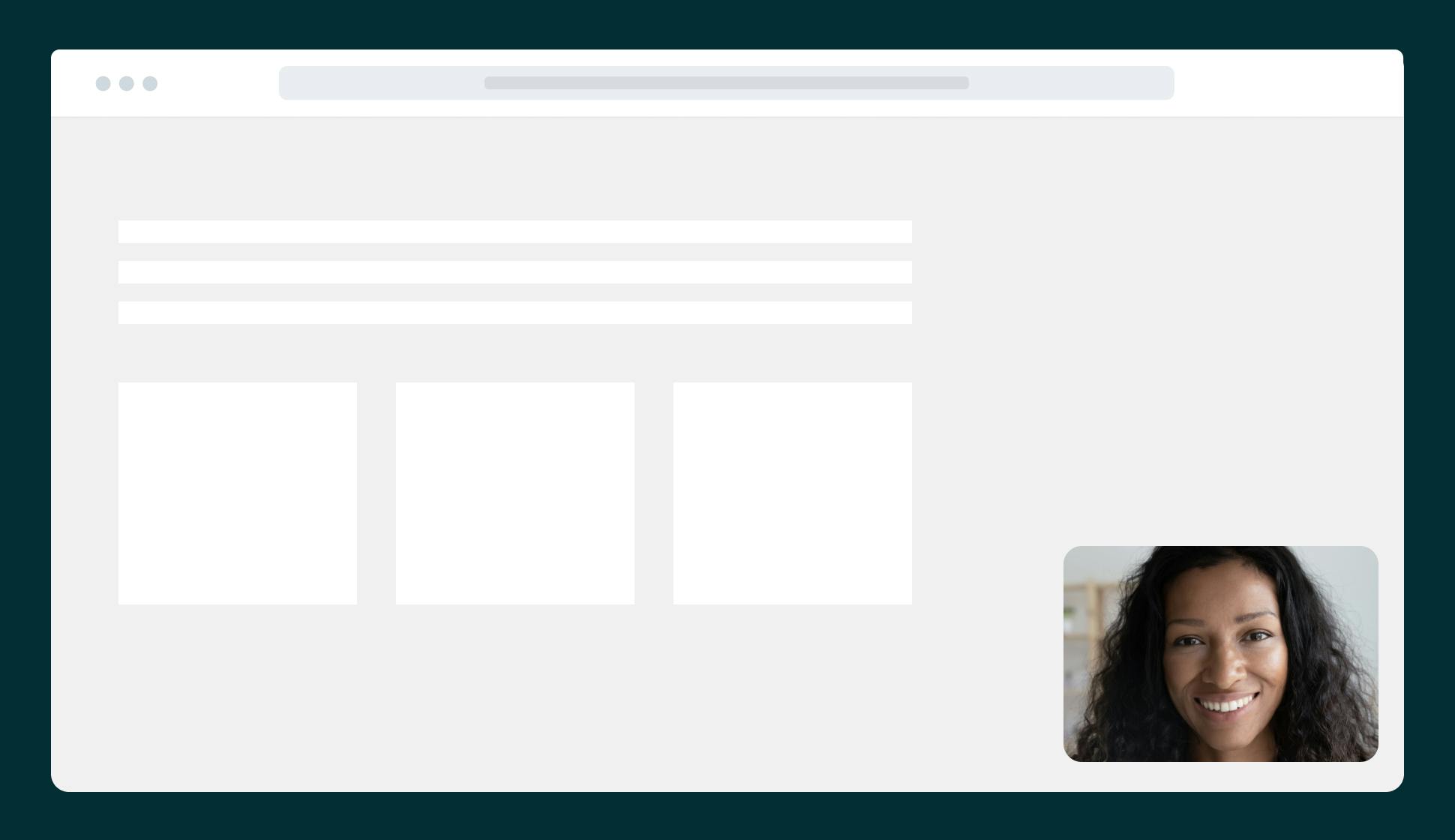
I learned about a new-to-me doxy.me feature last week that saved me from a real headache—Picture-in-Picture (PiP). This awesome tool solved a problem for me, so I’m hoping it will do the same for you.
How I learned about Picture-in-Picture
I was reviewing a report with a coworker in my doxy.me provider room—I’m sure it comes as no surprise we use our own platform for video meetings. I had the PowerPoint pulled up on my screen and was using the screen share function. However, I found myself flipping back and forth between the slideshow and the doxy.me window throughout the meeting.
At some point this annoyed me so much that I said, “I’m sick of this!” and turned off screen share. It wouldn’t have been the end of the world to continue the meeting without screen share. We would’ve needed to communicate more to figure out which slides and bullet points we were talking about, but it would have been doable.
However, my much smarter colleague saved us from the stress. “You know, you can still see me in another window if you just use Picture-in-Picture,” she said.
To which I replied, “What’s that?”
Picture-in-Picture: What is it?
The Picture-in-Picture feature turns your patient’s video feed into a small resizable square window. Visually, you will see your patient’s camera feed as a small box that you can move about your screen. The PiP video feed is mobile in two ways: one, you can click and drag it anywhere on your screen; two, the window will follow you even when you leave your doxy.me tab. This allows you to look at other screens while still being able to see your patient’s video feed. Here’s a representation:

Following her advice, I clicked the button. When I returned to the slideshow, I could still see her face (she had been able to see my face the whole time thanks to screen share). I was surprised I’d never heard about this feature before, and the more I thought about it, the more I realized how useful a function like this could be for providers.
How to use Picture-in-Picture.
Using Picture-in-Picture to have a great telehealth call
These are some examples of the feature in action that would be helpful to providers while you are on a call with a patient:
- You may need to check a patient’s health files or other information in a different tab. Using PiP, you can keep them in your view no matter where you’re looking.
- Tired of going split-screen while you take notes in-session? Use PiP to drop your patient’s video over your notes document and get the best of both worlds!
- When sharing your screen with your patient, you lose the ability to see them—unless you use PiP! This can be especially valuable for telehealth providers who need to watch reactions to the material they are sharing.
- PiP allows you to simulate eye contact. If you move the patient’s video window right below your monitor’s webcam, it will appear that you are making eye contact with them when you look at their video. This is more of a pro tip for providers hoping to personalize their call experience.
More feature articles coming soon
Discovering this feature made me wonder what other problems doxy.me could solve for me, so I’ve begun asking around about other features I may not have heard about. I hope I can share more tips like this in the future to make your telemedicine experience even better.